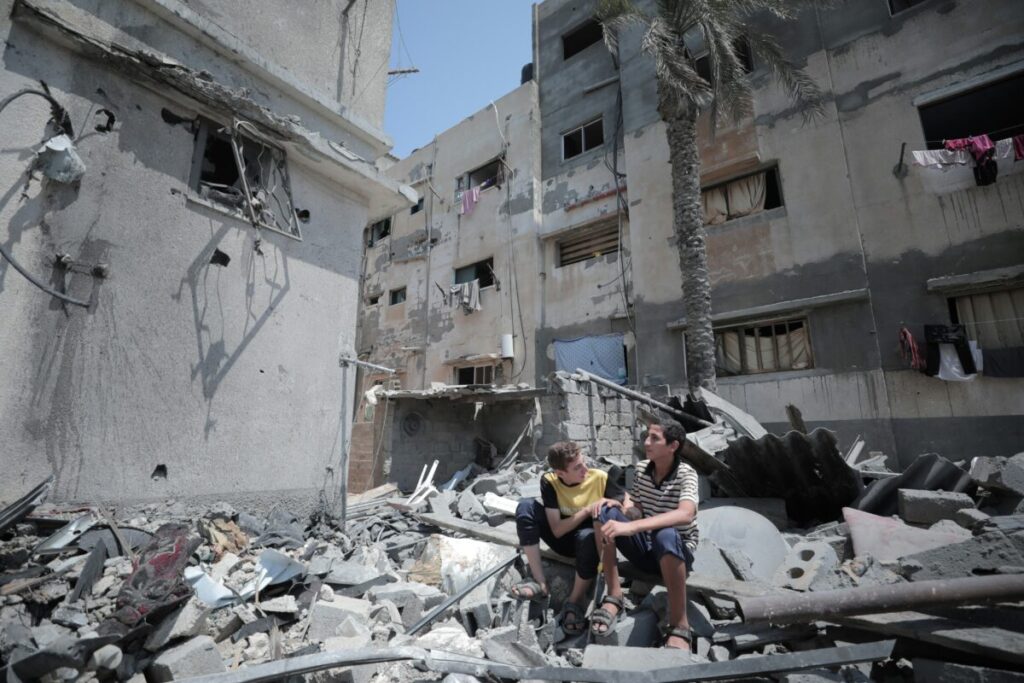By Lori Lee
NDG Contributing Writer
As over a million Israelis protest the continued fighting in Gaza, while calling for release of Israeli hostages, the Palestinian government last week accepted a ceasefire deal that would have set free half of the remaining hostages, MSNBC reported. Yet, as appealing as that might sound to many Israelis, it is unlikely their far right government will accept the deal, Netanyahu demanding release of all hostages and claiming he will not stop until Hamas is completely defeated, the BBC reported.
Given the divide between a majority of Israelis and their government, some have been calling for new elections, The New York Times reported.
Meanwhile, over half a million face starvation in Gaza as religious and government leaders continue calling for critical supplies into the country. Earlier this month, UNICEF Executive Director Ted Chaibon urgently requested the Strip be flooded with supplies through all channels and all gates.

Prior to the Hamas attack, the nutrition and health of Gazans had been generally good, with high rates of vaccination and few being malnourished, explained research professor and executive director of the World Peace Foundation Alex de Waal at an August Community Media briefing. Yet preceding the attack, Gaza had been quite dependent on Israel, which controlled its supplies of everything from food to medicine to fuel.
Since the fighting began, it’s been a tug of war between Israel and humanitarian organizations. Understandably, Israel has been criticized as constraining supplies as a weapon.
With only 45 percent of Gaza’s food and 80 percent of its water coming from local sources, the UN reported, Israel’s response to Hamas attacks have meant deep shortages of food and water for Gazans. This, in addition to housing, medical care, and sanitation, all defined by international law as objects indispensable to survival.
Shortly after Israel’s military campaign began, conditions in Gaza escalated from crisis and emergency levels to near famine conditions. This, as early as November 2023, according to the United Nations’ Integrated Food Security Phase Classification System (IPC).
Aid worker and journalist Afeef Nessouli, who recently returned from Gaza, painted a vivid picture of the conditions. With limited supplies, people are begging for food all the time. At the market, a network of cash brokers persist unregulated, with cans of tuna going for $10 to $15 a can and bags of flour selling for hundreds.
The aid distribution sites are very disorganized and dangerous, de Waal added, with huge crowds of people rushing in to get supplies under severe time limits. In this environment, soldiers wary of Hamas’ presence, can panic quickly, creating dangerous conditions for those desperately needing help.
Because they are disorganized, these centers meant to provide aid are not of the ethos of equality, neutrality or humanitarianism, said Messouli. “In my opinion, they’re set up as another strategy of eradicating and bringing a lot of pain to the people, rather than relief.”
Eating once a day was hard, Nessouli noted, but it’s a lot easier than eating once every few days, which is happening now for people Nessouli came to know while in Gaza.
The worst case scenario of famine is recently unfolding, said de Waal. And after long-term exposure to hunger, the long awaited supplies of food are not enough.
Famine is a social phenomenon, said de Waal, and as a social observer, the moment a family goes from sharing and breaking bread together to fighting for his own bread, famine begins. This is the line between what is human and what is animal, declared de Waal.
It was clear a process of dehumanization was occurring during what would become known as the flour massacres, added Amnesty International researcher Budour Hassan. In February of 2024, when people were allowed to return north of the Gaza Strip, trucks carrying flour and other supplies into Rafah were met by starved, desperate people, some resorting to eating feed meant for animals. The tightly-knit community exhibited a clear breakdown of social fabric, Hassan said.
During a brief window of hope, as people returned to rebuild damaged homes during the ceasefire, aid was allowed in. Yet, Israel denied entry of supplies for makeshift housing and machinery needed to remove the rubble.
Grazing lands and poultry farms were mostly destroyed by Israel, she said. And though some farmers planted to alleviate the starvation, they were not allowed access to the fertile lands within the extended buffer zones.
As the ceasefire collapsed, Israel pulled back on supplies. Yet, when shipments resumed in May, they were not enough to meet the needs of the persistently malnourished community, de Waal explained.
Last Friday, The UN confirmed a level five catastrophe in parts of the Gaza Strip, with 500,000 people facing catastrophic conditions. Phase five, the highest level, is characterized by extreme lack of food, starvation and death.
The agency calls the occurrence a man-made disaster resulting from restrictions imposed by Israel. The UN also defined starvation used in warfare as a war crime.




